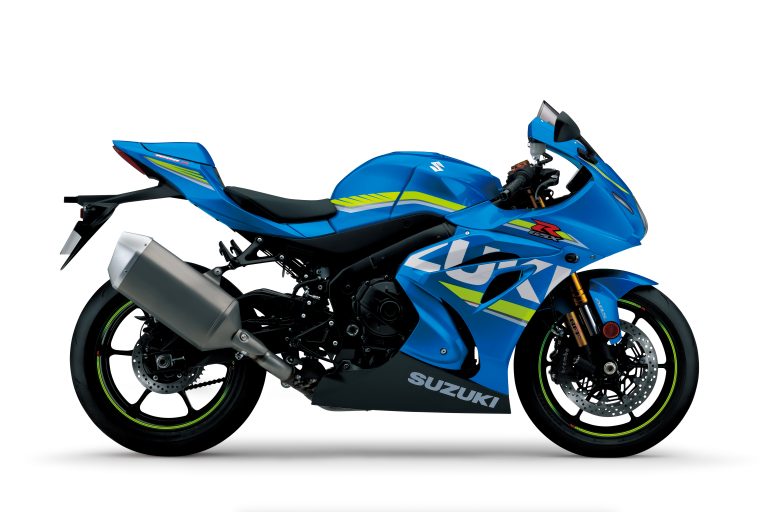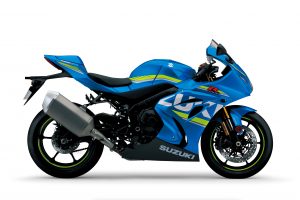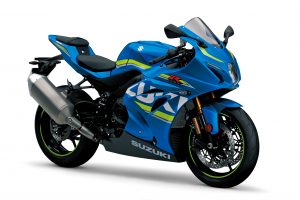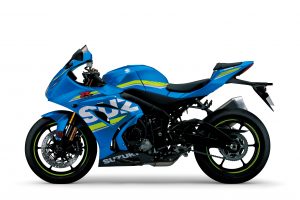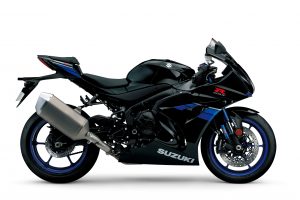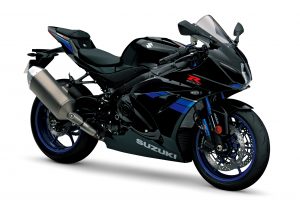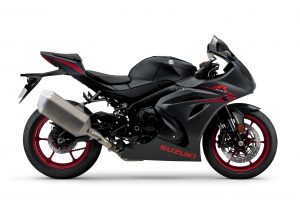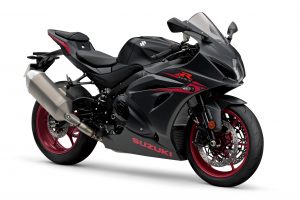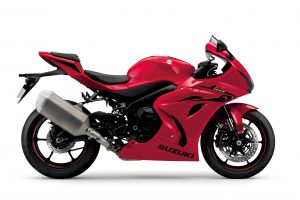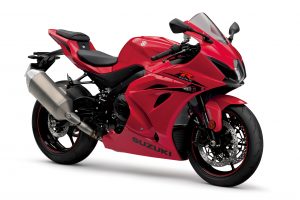Suzuki returned to the drawing board when it came to its flagship superbike, designing and building a brand new machine using technology developed from competition in MotoGP. The chief engineer on the project, Shinichi Sahara, used his experience as a former MotoGP technical manager and project manager to develop a new power-plant that produces 202PS at 13,200rpm – Suzuki’s most powerful GSX-R engine, ever – to make sure the GSX-R1000 can reclaim its crown as the king of sportsbikes.
Engine
Both the GSX-R1000 and GSX-R1000R utilise an all-new, 999.8cc inline four-cylinder engine, which uses Suzuki Racing Variable Valve Timing (SR-VVT) and a new finger follower valve train as part of Suzuki’s Broad Power System. Developed for use on the firm’s GSX-RR MotoGP racer, the system allows the new engine to produce strong low-midrange power, before the SR-VVT boosts top-end output.
Suzuki’s SR-VVT is a compact and lightweight mechanical system, that is built into the intake sprocket and is activated by centrifugal force, while the new finger-follower valve train is 6g lighter than a conventional bucket/tappet system, and allows the engine to rev higher and increases top-end power, with reliability.
Inside the engine there are new pistons, pins, and rings, as well as new camshafts and titanium valves for higher peak power.
Top-feed injectors, located on top of the air box, and new ride-by-wire throttle bodies also help boost peak power and allow for more efficient combustion and precise fuelling control, while servo-operated exhaust valves in the exhaust balance tubes remain closed in the low and midrange, opening in the higher rev range to increase top-end power, again without compromising on the low-midrange.
Careful thought and planning also went into the engine’s dimensions and layout, to enhance the bike’s cornering performance. The cylinder block incline angle is moved backwards by 6 degrees, reducing the engine length by 22.2mm, the benefits of which are increased front-end feel and increased stability.
The new GSX-R1000 also gets a redesigned slipper clutch for easier deceleration and a lighter lever pull, and a new cooling system, with a high-efficiency curved radiator and dual electric fans.
Electronics
Competition in MotoGP has also led to the development of Suzuki’s most comprehensive and sophisticated electronics package, which features a six-directional inertial measurement unit (IMU), 10-mode traction control system, cornering ABS, and three-rider modes.
The new traction control system uses six sensors and the IMU to control the throttle valve opening to optimise traction in each mode. Signals from front and rear wheel speed sensors, gear position sensor, crank position sensor, throttle grip and throttle valve position sensors, and the machine’s IMU are fed to the ECU which retards ignition timing and controls the throttle input when the rear wheel breaks traction. There are 10 modes for riders to choose from, depending on their preference and riding conditions.
Suzuki’s Motion Track Brake System is also found on both versions of the GSX-R, but varies between models. On the GSX-R1000R, the system allows the ABS to operate while leaned over, as well as in a straight line, further enhancing rider confidence. The system will also optimize front brake pressure during heavy braking to reduce rear wheel lift. The GSX-R1000 features the ‘anti-stoppie’ function of the Motion Track Brake System, but without the lean angle sensitive function.
As pioneers of multiple rider modes – which were first seen on the GSX-R1000 K7 – Suzuki has refined and developed the system for the new machine, with three modes available for riders to select depending on the road and weather conditions. There’s also an easy-start system and low- assist function.
Setting the GSX-R1000R apart from the GSX-R1000 is the addition of a bi-directional quick-shifter, which uses a throttle valve position sensor and a gear shift linkage sensor to automatically retard the ignition on upshifts, and open the throttle valve on downshifts, meaning there is no requirement for riders to shut the throttle when going up through the gears, or blip the throttle on the way down, resulting in slicker gear changes and faster, more consistent lap times.
Also unique to the GSX-R1000R is a launch control system that allows riders to make smoother, faster starts, as six sensors work together to limit engine rpm and control the throttle valve, reducing the chance of wheelies and lets riders concentrate on clutch operation.
Chassis
Both versions of the new GSX-R1000 use a brand new aluminium frame that is 10% lighter than the frame of the previous model. It is also 20mm narrower at its widest point that previous generation’s frame, making the new model more agile. There’s also a new swingarm with optimised rigidity to improve handling performance.
Suspending the GSX-R1000R is the latest generation of Showa’s Balance Free front forks and rear shock, which give more controlled performance and improve front-end feel. The GSX-R1000 model utilises Showa’s Big Piston front forks and Showa rear shock.
Front brakes are radially mounted Brembo monobloc calipers, but with new, larger Brembo discs. The 320mm discs use five T-drive and five floating pins, help to reduce lateral movement under braking.
New bodywork is MotoGP-inspired, and is designed with aerodynamic efficiency first and foremost, improving both handling and top speed. The air intake ducts are positioned closer to the centre of the fairing, where the air pressure is higher, and are also larger than the previous GSX-R1000’s, increasing airflow into the air box.
There’s also a new, full LCD dash, LED headlight and, on the R model, LED position lights, and an LED taillight at the rear. Turn signals, both front and rear, are also LED.
The GSX-R1000 is set to arrive in the spring, with the GSX-R1000R due to arrive later in the season.
